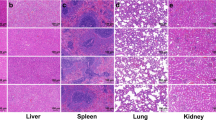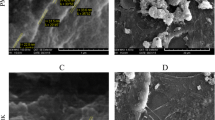Abstract
Purpose
The aim of this study includes the comparative examination of neurosphere formation by WJ-derived mesenchymal stem cells in both 2D media and 3D injectable graphene and graphene-free bioink systems in terms of both immunostaining and gene expression levels.
Methods
For this purpose, hydrogel bioinks were first created and the wj-MKH spheroidal structure was formed on 3D-B (without graphene) and 3D-G (containing graphene). Then, following the differentiation procedure, neurosphere transformations were identified by both immunostaining (b-III Tubulin and Sox2), and Tubulin 3, Sox2, and Nestin markers were examined at the gene expression level with Real-Time PCR, and the results were compared with the 2D environment.
Results
According to the results obtained, neurosphere formation occurred more in the 3D environment compared to the 2D environment, obtained both by immunostaining and gene expression levels. It was also observed that differentiation formed neuron-like structures, especially in the 3D-G group containing graphene.
Conclusion
As a result, it has been observed that the use of graphene with a non-toxic concentration in the hydrogel injectable system provides better differentiation of stem cells, especially those that will form the cell leg of the biomaterial.
Lay Summary
Therefore, the use of graphene-containing hydrogels in injectable systems in nerve damage may increase the effectiveness on nerve regeneration.







Similar content being viewed by others
References
Mooney E, Dockery P, Greiser U, Murphy M, Barron V. Carbon nanotubes and mesenchymal stem cells: biocompatibility, proliferation and differentiation. Nano Lett. 2008;8(8):2137–43. https://doi.org/10.1021/nl073300o.
Hu H, Ni Y, Montana V, Haddon RC, Parpura V. Chemically functionalized carbon nanotubes as substrates for neuronal growth. Nano Lett. 2004;4(3):507–11. https://doi.org/10.1021/nl035193d.
Zheng Y, Hong X, Wang J, Feng L, Fan T, Guo R, Zhang H. 2D nanomaterials for tissue engineering and regenerative nanomedicines: recent advances and future challenges. Adv Healthcare Mater. 2021;10(7):e2001743. https://doi.org/10.1002/adhm.202001743.
Chen M, Qin X, Zeng G. Biodegradation of carbon nanotubes, graphene, and their derivatives. Trends Biotechnol. 2017;35(9):836–46. https://doi.org/10.1016/j.tibtech.2016.12.001.
Zorba Yildiz AP, Darici H, Yavuz B, Abamor ES, Ozdemir C, Yasin ME, Bagirova M, Allahverdiyev A, & Karaoz E. Preparation and characterization of graphene-based 3D biohybrid hydrogel bioink for peripheral neuroengineering. J Vis Exp : JoVE, 2022;(183), https://doi.org/10.3791/63622. https://doi.org/10.3791/63622
Bingham JR, Kniery KR, Jorstad NL, Horkayne-Szakaly I, Hoffer ZS, Salgar SK. “Stem cell therapy to promote limb function recovery in peripheral nerve damage in a rat model” - Experimental research. Annal Med Surg. 2019;2012(41):20–8. https://doi.org/10.1016/j.amsu.2019.03.009.
Yavuz B, Darici H, Zorba Yildiz AP, Abamor EŞ, Topuzoğullari M, Bağirova M, Allahverdiyev A, & Karaoz E. Formulating and characterizing an exosome-based dopamine carrier system. J Vis Exp : JoVE, 2022;182, https://doi.org/10.3791/63624. https://doi.org/10.3791/63624
Liau LL, Ruszymah BHI, Ng MH, Law JX. Characteristics and clinical applications of Wharton’s jelly-derived mesenchymal stromal cells. Curr Res Trans Med. 2020;68(1):5–16. https://doi.org/10.1016/j.retram.2019.09.001.
Zarepour A, Bal Öztürk A, Koyuncu Irmak D, Yaşayan G, Gökmen A, Karaöz E, Zarepour A, Zarrabi A, Mostafavi E. Combination therapy using nanomaterials and stem cells to treat spinal cord injuries. Eur J Pharm Biopharm. 2022;177:224–40. https://doi.org/10.1016/j.ejpb.2022.07.004.
Xu W, Wu Y, Lu H, Zhang X, Zhu Y, Liu S, Zhang Z, Ye J, Yang W. Injectable hydrogel encapsulated with VEGF-mimetic peptide-loaded nanoliposomes promotes peripheral nerve repair in vivo. Acta Biomater. 2023;160:225–38. https://doi.org/10.1016/j.actbio.2023.02.004.
Yavuz, B., Yildiz, A.P.Z., Abamor, E.S.,Darici, H., Allahverdiyev, A.(2023). Neuroprotective effects of Wharton jelly stem cell-derived exosomes developed as nano-drug delivery system in 6-OHDA-induced neurotoxicity in 2D and 3D neuronal cell line. Reg Eng Trans Med. https://doi.org/10.1007/s40883-023-00322-0
Liu S, Li R, Dou K, Li K, Zhou Q, Fu Q. Injectable thermo-sensitive hydrogel containing ADSC-derived exosomes for the treatment of cavernous nerve injury. Carbohyd Polym. 2023;300:120226.
Yin Z, Qin C, Pan S, Shi C, Wu G, Feng Y, Zhang J, Yu Z, Liang B, Gui J. Injectable hyperbranched PEG crosslinked hyaluronan hydrogel microparticles containing mir-99a-3p modified subcutaneous ADSCs-derived exosomes was beneficial for long-term treatment of osteoarthritis. Mater Today Bio. 2003;23:100813. https://doi.org/10.1016/j.mtbio.2023.100813.
Xiao L, Xie P, Ma J, Shi K, Dai Y, Pang M, Luo J, Tan Z, Ma Y, Wang X, Rong L, He L. A bioinspired injectable, adhesive, and self-healing hydrogel with dual hybrid network for neural regeneration after spinal cord injury. Adv Mater. 2023;35(41):e2304896. https://doi.org/10.1002/adma.202304896.
Pinto AM, Magalhães FD. Graphene-polymer composites. Polymers. 2021;13(5):685. https://doi.org/10.3390/polym13050685.
Lee WC, Lim CH, Shi H, Tang LA, Wang Y, Lim CT, Loh KP. Origin of enhanced stem cell growth and differentiation on graphene and graphene oxide. ACS Nano. 2011;5(9):7334–41. https://doi.org/10.1021/nn202190c.
Binulal NS, Natarajan A, Menon D, Bhaskaran VK, Mony U, Nair SV. PCL-gelatin composite nanofibers electrospun using diluted acetic acid-ethyl acetate solvent system for stem cell-based bone tissue engineering. J Biomater Sci Polym Ed. 2014;25(4):325–40. https://doi.org/10.1080/09205063.2013.859872.
Rao F, Zhang D, Fang T, Lu C, Wang B, Ding X, Wei S, Zhang Y, Pi W, Xu H, Wang Y, Jiang B, Zhang P. Exosomes from human gingiva-derived mesenchymal stem cells combined with biodegradable chitin conduits promote rat sciatic nerve regeneration. Stem Cells Int. 2019;2019:2546367. https://doi.org/10.1155/2019/2546367.
Batioglu-Karaaltin A, Karaaltin MV, Oztel ON, Ovali E, Sener BM, Adatepe T, Yigit O, Bozkurt E, Baydar SY, Bagirova M, Uzun N, Allahverdiyev A. Human olfactory stem cells for injured facial nerve reconstruction in a rat model. Head Neck. 2016;38(Suppl 1):E2011–20. https://doi.org/10.1002/hed.24371.
Peng XL, Yang Z, Guoliang Z, Fengbao FX. Functionalization of graphene with nitrile groups by cycloaddition of tetracyanoethylene oxide. J Nanomater, 2013;1–5. https://doi.org/10.1155/2013/841789.
Ciplak Z, Yildiz N, Calimli A. Investigation of graphene/Ag nanocomposites synthesis parameters for two different synthesis methods. Fullerenes, Nanotubes, Carbon Nanostruct. 2014;23:361–70. https://doi.org/10.1080/1536383X.2014.894025.
Xiao C, Liu H, Lu Y, Zhang L. Blend films from sodium alginate and gelatin solutions. J Macromol Sci Part A. 2001;38:317–28. https://doi.org/10.1081/MA-100103352.
Chen L, Daley GQ. Molecular basis of pluripotency. Human Mol Gen. 2008;17(1):23–7.
Dahlstrand J, Lardelli M, Lendahl U. Nestin mRNA expression correlates with the central nervous system progenitor cell state in many, but not all, regions of developing central nervous system. Brain Res Dev Brain Res. 1995;84(1):109–29. https://doi.org/10.1016/0165-3806(94)00162-s.
Hosseini SM, Vasaghi A, Nakhlparvar N, Roshanravan R, Khozani TT, Razi Z. Differentiation of Wharton’s jelly mesenchymal stem cells into neurons in alginate scaffold. Neural Regen Res. 2015;10(8):1312–6. https://doi.org/10.4103/1673-5374.162768.
Guo J, Walss-Bass C, Ludueña RF. The beta isotypes of tubulin in neuronal differentiation. Cytoskeleton. 2010;67(7):431–41. https://doi.org/10.1002/cm.20455.
Chen M, Qin X, Zeng G. Biodegradation of carbon nanotubes, graphene, and their derivatives. Trends Biotechnol. 2017;35(9):836–46. https://doi.org/10.1016/j.tibtech.2016.12.001.
Chen S, Zhao Y, Yan X, Zhang L, Li G, Yang Y. PAM/GO/gel/SA composite hydrogel conduit with bioactivity for repairing peripheral nerve injury. J Biomed Mater Res, Part A. 2019;107(6):1273–83. https://doi.org/10.1002/jbm.a.36637.
Zhu W, Harris BT, Zhang LG. Gelatin methacrylamide hydrogel with graphene nanoplatelets for neural cell-laden 3D bioprinting. Annual International Conference of the IEEE Engineering in Medicine and Biology Society. IEEE Engineering in Medicine and Biology Society. Annual Int Conf. 2016;2016:4185–8. https://doi.org/10.1109/EMBC.2016.7591649.
Ferreira A, Caceres A. Expression of the class III beta-tubulin isotype in developing neurons in culture. J Neurosci Res. 1992;32(4):516–29. https://doi.org/10.1002/jnr.490320407.
Acknowledgements
We would like to thank Darıcı lab teams for their helpfulness.
Funding
Support for this study was provided by the Yıldız Technical University Scientific Research Coordination Office (Project Number: TSA-2021–4713).
Author information
Authors and Affiliations
Corresponding author
Ethics declarations
Competing Interests
The authors declare that they have no competing financial interests.
Additional information
Publisher's Note
Springer Nature remains neutral with regard to jurisdictional claims in published maps and institutional affiliations.
Rights and permissions
Springer Nature or its licensor (e.g. a society or other partner) holds exclusive rights to this article under a publishing agreement with the author(s) or other rightsholder(s); author self-archiving of the accepted manuscript version of this article is solely governed by the terms of such publishing agreement and applicable law.
About this article
Cite this article
Yildiz, A.P.Z., Yavuz, B., Abamor, E.S. et al. Investigatıon of Neurosphere Activity of Injectable 3D Graphene Bioink Biomaterial. Regen. Eng. Transl. Med. (2024). https://doi.org/10.1007/s40883-024-00336-2
Received:
Revised:
Accepted:
Published:
DOI: https://doi.org/10.1007/s40883-024-00336-2




